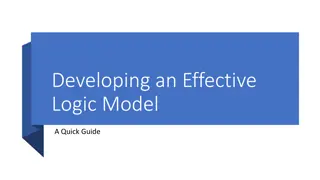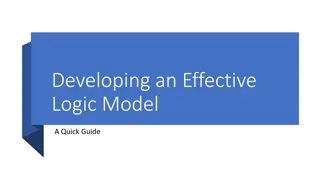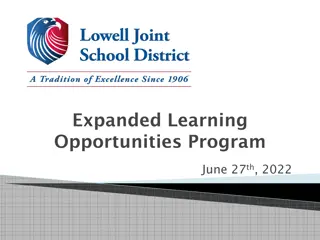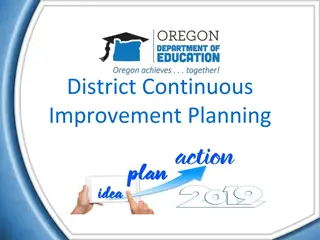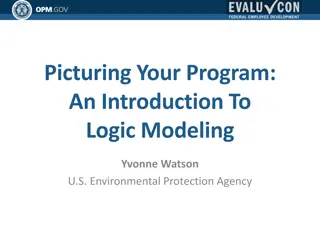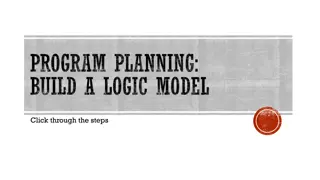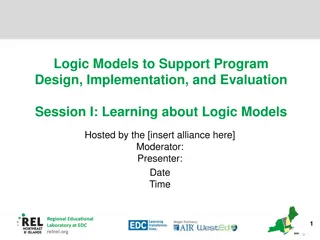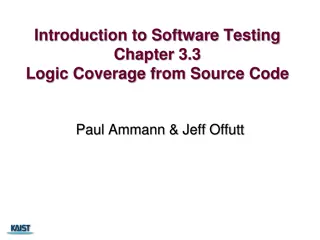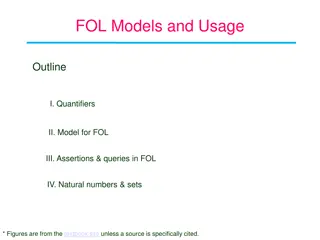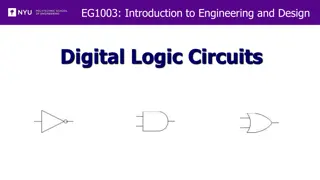Developing Effective Logic Models for Continuous Program Improvement
Explore the essentials of logic models and their significance in evaluating programs for continuous improvement, presented by Hawley Carlson and Alicia Blood. Learn about theory of change, logic model components, and using logic models for evaluation planning.
Download Presentation

Please find below an Image/Link to download the presentation.
The content on the website is provided AS IS for your information and personal use only. It may not be sold, licensed, or shared on other websites without obtaining consent from the author. Download presentation by click this link. If you encounter any issues during the download, it is possible that the publisher has removed the file from their server.
E N D
Presentation Transcript
Developing Effective Logic Models for Continuous Program Improvement Presented by: Hawley Carlson and Alicia Blood
Agenda Learning Objectives Theory of Change Overview of Logic Model Logic Model Tablework How to Use Logic Models for Evaluation
Learning Objectives By the end of this presentation you will be able to: Identify the key components of a logic model Understand how to use a logic model for evaluation planning
Theory of Change Intended Outcome Need Intervention
What is a Logic Model? A detailed, visual representation of a program s theory of change Inputs Activities Outputs Outcomes
Output vs. Outcomes Outputs are the direct products of a program s activities and may include types, levels and targets of services to be delivered by the program Outcomes are the expected changes in the population served that result from a program s activities and fall along a continuum, ranging from short to long term results
Output vs. Outcomes Outputs Outcomes Direct products of a program s activities/services Changes resulting from a program s activities/services Often expressed numerically or quantified in some way Quantify changes in knowledge, attitude, behavior, or condition Examples: # attending workshops # receiving services # receiving referrals Examples: knowledge healthy choices adoption healthy practices food security
Create a Logic Model Things to keep in mind: Two sides process and outcomes If .then .
Conservation Program Logic Model Sample
Evaluation Design program evaluation that measures your outcomes Should be an active, learning process You may discover that the outcomes of your project are different than anticipated








